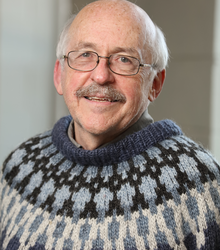
Blaine Norum
Ph.D., 1979, MIT
Professor
Experimental Nuclear and Particle Physics
Research Interests
Quantum Chromo-Dynamics (QCD) provides an excellent description of subnuclear phenomena at high energies. However, at lower energies observables cannot be calculated exactly from QCD; one has to resort to models or parametrizations which are consistent with the basic symmetries of QCD. Near-threshold electromagnetic production of pions from nucleons are ideal processes in which to test these theoretical approaches. We are engaged in measuring these processes at the Jefferson Laboratory (JLab) and at the new High Intensity Gamma Source (HIGS) located at the Duke Free Electron Laser Laboratory. An alternative means of testing QCD at low to intermediate energies is to examine observables for which the QCD calculation averages over the incalculable details to yield a result that is dependent only on the basic tenets of the underlying theory. The Gerasimov-Drell-Hearn and Forward Spin Polarizability Sum Rules are examples of such quantities. We are studying these sum rules at the Laser Electron Gamma Source (LEGS) facility of the Brookhaven National Laboratory and at HIGS. Another means of testing our understanding of the strong interaction is to examine polarization (either the target, the incident beam, or both) observables in few-body systems such as deuterium and helium-3. We are performing studies of both of these at LEGS, JLab, and HIGS.
The University of Virginia has a longstanding involvement in Accelerator Physics, having been the institution that initiated the establishment of the Jefferson Laboratory. We are working with the JLab Accelerator Division and the JLab Free Electron Laser Program to pursue studies of the techniques required for the next generation of synchrotron light sources. The focus is on the use of a recirculating, superconducting electron accelerator with short period, superconducting undulators to produce intense, short wavelength light.
 Physics at Virginia
Physics at Virginia